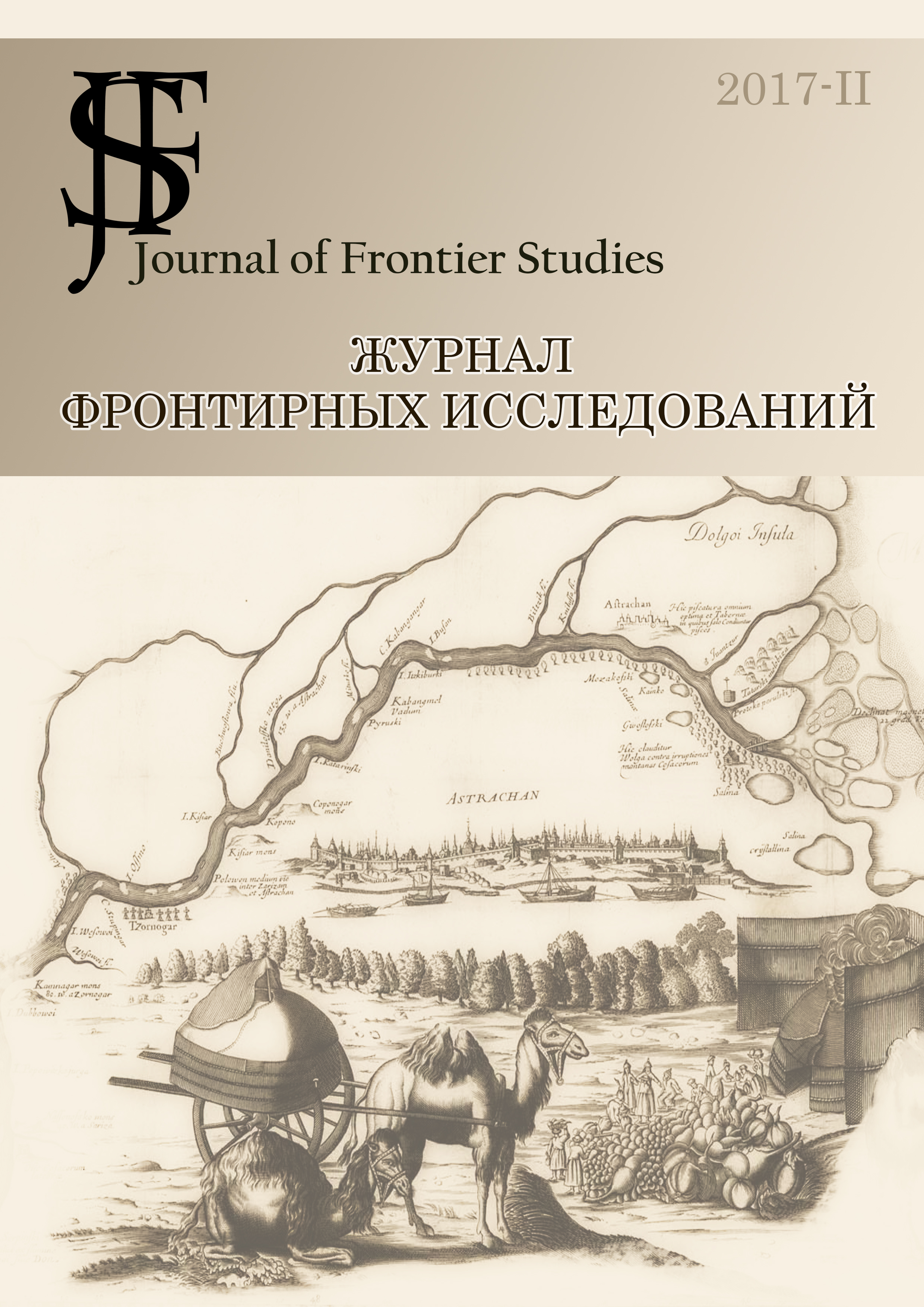Abstract
The article is devoted to the influence on the development of the Roman-Iranian borderland of such an ethnoconfessional factor as the Arab tribes and the buffer states formed by them. Among them are considered such political formations as: Nabataean kingdom, Osroena, Palmira, Characene, Hatra. The features of their interaction with the "great powers" (Parthia, and then the Sasanid Empire on the one hand and Rome, then Byzantium on the other) and the nomadic periphery are considered. Considered is the enormous influence of the Trans-Arab trade routes, especially the "The Incense trade route" in the development of the Arab sector of the Roman-Iranian borderland. The gradual shift in the sharpness of the development of the Roman-Iranian borderland and the shift of political, religious, and cultural activity to its former periphery, to the Arabian Peninsula, is shown. The formation, flowering and decline of such clan buffer frontier states as Lakhmids, Ghassanids and Kindahes. The article describes the complex struggle of foreign policy groups in Ḥimyar (Ancient Yemen), between the pro-Romanian (pro-Byzantine) and pro-Sasanid (pro-Persian) "trade parties". Attempts by various foreign policy actors of the region to take under direct control the territories inhabited by the Arabs, but without success. The "Arab factor", organized in the form of a new world religion of Islam led by the Prophet Muhammad, that destroyed the Roman-Iranian borderland that had existed for eight centuries before.
References
Bennett, D. & Hill, R. B. (2008). Clare Haru Crowston. A History of World Societies, Combined Volume 1. Publisher: Bedford/St. Martin's,
Taylor, J. (2001) Petra And the Lost Kingdom of the Nabataeans. I. B. Tauris.
Абрамзон, М. Г. (2006). Осроена в римской восточной политике в I в. до н. э. — III в. н.э. «Проблемы истории, филологии, культуры». XV. М.: Магнитогорск-Новосибирск.
Грушевой, А.Г. (2007). Принципы взаимоотношений Рима и ранней Византии с аравийскими кочевниками. МНЕМОН
Исследования и публикации по истории античного мира. Выпуск 6. 337-366
Дмитриев, В.А. (2008). Всадники в сверкающей броне. Военное дело Сасанидского Ирана и история римско-персидских войн. СПб.: Петербургское Востоковедение
Иосиф, Флавий (1991). Иудейская война. Минск: Беларусь,.
Иосиф, Флавий (1994). Иудейские древности: в 2 т. М.: Крон-Пресс (Академия),
Надиров, И. И. (2009). Хатра. Арабы между Парфией и Римом. СПб.: ИЦ «Гуманитарная Академия»
Пигулевская, Н. В. (1964). Арабы у границ Византии и Ирана в IV‒VI вв. М.‒ Л.
Пиотровский, М. Б. (1984). Поход слона на Мекку (Коран и историческая действительность). Ислам: религия, общество, государство. М: Наука, 28-35.
Плиний Старший. (2008). Естественная история. М.: Директмедиа Паблишинг.
Плутарх (1994). Сравнительные жизнеописания: в 2 т. М.: Наука. Т. 2.
Руссо, М. (2015). Хатра – погибший город солнца. Получено из http://polit.ru/article/2015/03/09/ps_hatra/
Рыжов, К. (2001). Все монархи мира. Древний Восток. М.: «Вече».
Сычев, Н.В. (2008). Книга династий. М.
Тацит (1993). Сочинения: в 2 т. Т. 1. Анналы. Малые произведения. М.: Ладомир.
Феофилакт Симокатта (1957). История. М.
Шифман, И. Ш. (2007) Набатейское государство и его культура. Из истории доисламской Аравии. СПб.: Изд-во С.-Петерб. ун-та.
Шумов. С.А & Андреев, А.Р. (2002) Ирак: история, народ, культура: Документальное историческое исследование. М.: Монолит-Евролинц-Традиция.

This work is licensed under a Creative Commons Attribution-NonCommercial-NoDerivatives 4.0 International License.

